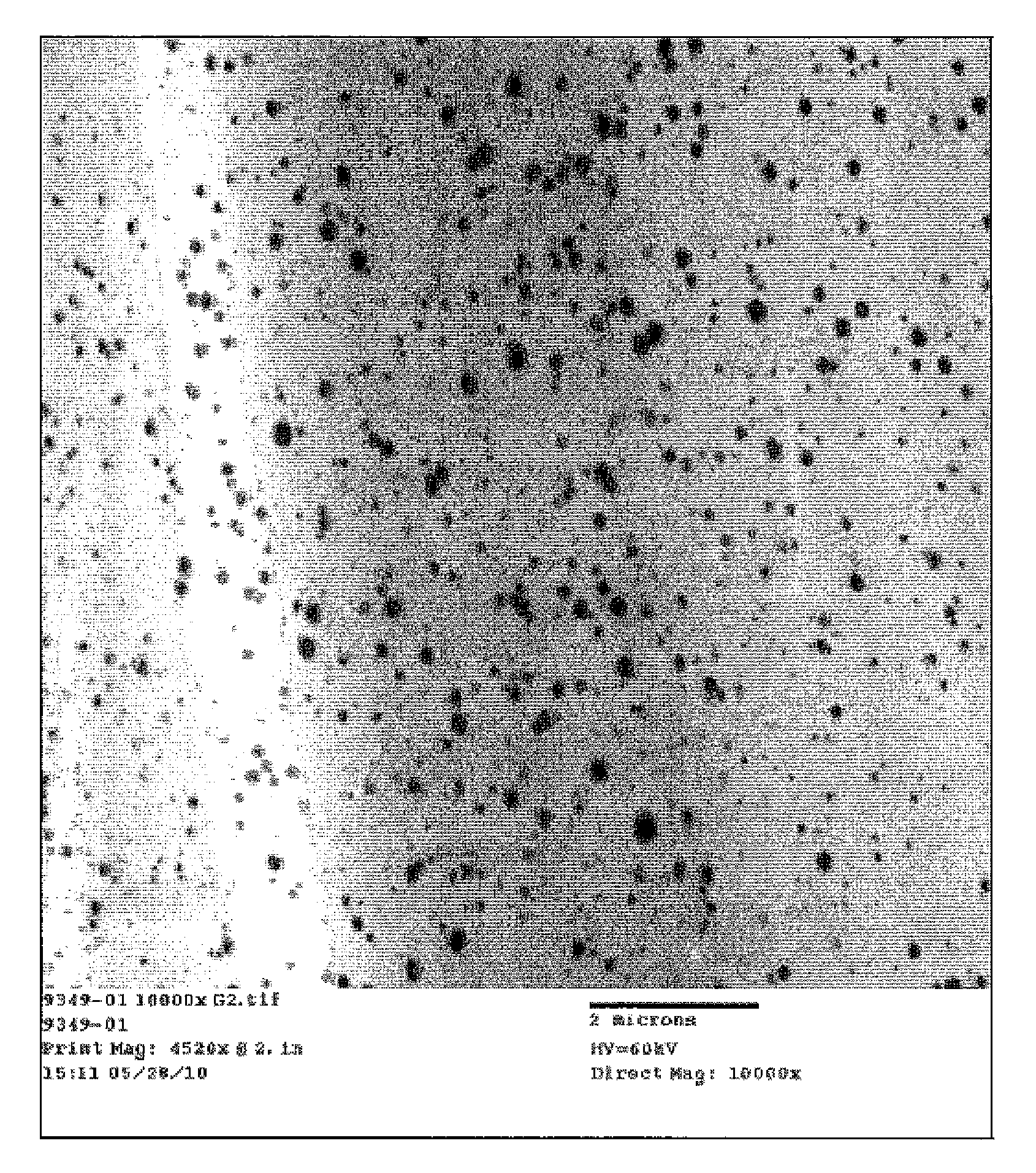Modified Polylactic Acid Fibers
a technology of polylactic acid fibers and modified polylactic acid, which is applied in the direction of melting spinning methods, weaving, transportation and packaging, etc., can solve the problems of thermally bonded pla nonwoven webs that exhibit low elongation and are not acceptable in certain applications, and achieve the effect of facilitating the reaction of polyepoxide modifiers
- Summary
- Abstract
- Description
- Claims
- Application Information
AI Technical Summary
Benefits of technology
Problems solved by technology
Method used
Image
Examples
example 1
[0107]Fibers formed from 100% polylactic acid (PLA) were formed as a control by extruding PLA 6201D (Natureworks®, melt flow rate of 10 g / 10 min at 190° C.) into fiber form. More specifically, polylactic acid was supplied to an extruder heated to a temperature of 235° C. The throughput of the extruder was 0.4 grams per hole per minute (on a 16 hole per inch spinpack). The melt was extruded through the spinpack to form continuous fibers which were then quenched using forced air supplied by a blower a temperature of 25° C. The continuous fibers were then drawn through a fiber draw unit and sent them onto a godet roll at a speed of 2000 meters per minute (“mpm”). The resulting draw ratio was 1549. Fibers were collected at 2000 mpm to provide a target 15 μm fiber. Fibers were then drawn onto a godet roll at a speed of 3000 meters per minute (“mpm”), The resulting draw ratio was 2324.
example 2
[0108]The ability to form fibers from a blend of 97 wt. % polylactic acid (PLA 6201D, Natureworks®) and 3 wt. % of a polyepoxide modifier was demonstrated. The polyepoxide modifier was poly(ethylene-co-methyl acrylate-co-glycidyl methacrylate) (Sigma-Aldrich Co.) having a melt flow rate of 6 g / 10 min (190° C. / 2160 g), a glycidyl methacrylate content of 8 wt. %, methyl acrylate content of 25 wt. %, and ethylene content of 67 wt. %. The polymers were fed into a Thermo Prism™ USALAB 16 twin screw extruder (Thermo Electron Corp., Stone, England). The melt temperature of the extruder was 195° C. The extruder had 11 zones, numbered consecutively 0-10 from the feed hopper to the die. The polylactic acid resin was dry mixed with the polyepoxide modifier and fed to the feed throat of the extruder (un-heated, before zone 1 of the extruder) at a rate of 3 pounds per hour. The screw speed was 200 revolutions per minute (“rpm”). The die used to extrude the resin had 1 die openings (3 millimeters...
example 3
[0109]Fibers were formed from a blend of 95 wt. % polylactic acid (PLA 6201D, Natureworks®) and 5 wt. % of poly(ethylene-co-methyl acrylate-co-glycidyl methacrylate) (Sigma-Aldrich Co.) as described in Example 2. The continuous fibers were then drawn onto a godet roll at a speed of 2000 meters per minute (“mpm”). The resulting draw ratio was 1549. Fibers were also spun at 3000 meters per minute (“mpm”) for a resulting draw ratio of 2324.
PUM
| Property | Measurement | Unit |
|---|---|---|
| temperature | aaaaa | aaaaa |
| temperature | aaaaa | aaaaa |
| temperature | aaaaa | aaaaa |
Abstract
Description
Claims
Application Information
 Login to View More
Login to View More - R&D
- Intellectual Property
- Life Sciences
- Materials
- Tech Scout
- Unparalleled Data Quality
- Higher Quality Content
- 60% Fewer Hallucinations
Browse by: Latest US Patents, China's latest patents, Technical Efficacy Thesaurus, Application Domain, Technology Topic, Popular Technical Reports.
© 2025 PatSnap. All rights reserved.Legal|Privacy policy|Modern Slavery Act Transparency Statement|Sitemap|About US| Contact US: help@patsnap.com



